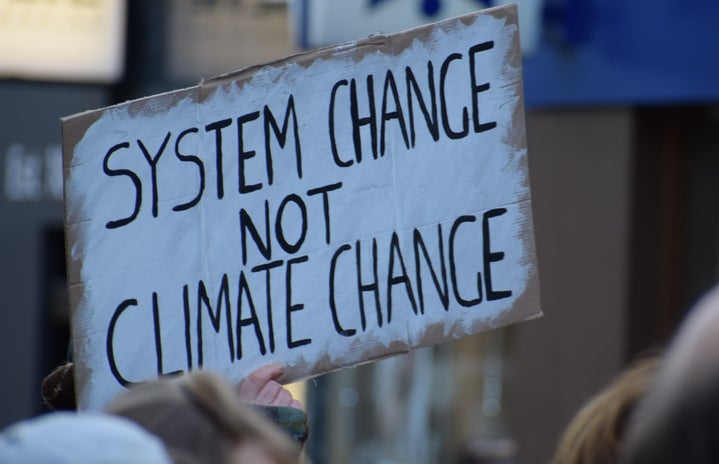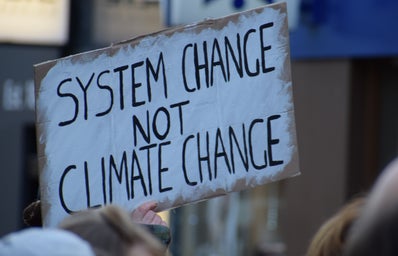COP26 is an acronym for the Conference of Parties and this year is the 26th meeting, hence its name. The conference began on Oct. 31 and ended on Nov. 12.
COP is a climate action summit where the most powerful, influential, and passionate leaders come to meet and collaborate to avoid raising the Earth’s average temperature by 1.5 degrees celsius.
These conferences have monumental impacts as both the Kyoto Protocol and the Paris Climate agreements were made at COP3 and COP21, respectively.
States have made significant progress and I have no intentions of downplaying the importance of the actions that have been taken but, we need more.
Years have gone by in preparation for this conference to maximize sustainability in every aspect.
With all this planning in mind I, along with many other young climate activists, would expect a little more forethought in regards to the planning of the decor. Unnecessary waste on extravagant things should not be occurring. If these problems are not brought to the attention of the organizers then change will never occur.
This is not only a problem at COP26, but large gatherings on national and international levels oftentimes create displays and decor that are wasteful when alternatives exist.
COP26 is the place for innovative solutions that wow individuals and convince them to incorporate modern and creative solutions into their communities. These conferences are the perfect opportunity to show nations around the world the potential for what they can achieve.
With all of that in mind, a few displays were sustainable, but funded by outside organizations and located in London, not where the conference was taking place.
One common complaint at COP26, where the participants widely encourage the elimination and replacement of fossil fuels, the main sponsors were energy giants. Representatives of the fossil fuel industry should not occupy space at climate change conferences.
Climate activists are fed up with their leaders pledging money and substantial change but never seeing the results. The promises have stayed empty for too long and the environmental time bomb is counting down.
Funds are lacking and goals are not met. The richest countries in the world made promises to donate billions of dollars towards financing countries that are most vulnerable to a changing climate. With no money in their hands, these countries are struggling to recover from weather disasters and are reliant on finite fossil fuels. A problem in this particular situation was the lack of detail on which country paid how much and when and to who.
These promises became empty just like the circle on the election ballot next to these leaders’ names.
Thankfully, the issue of worldwide deforestation was addressed at COP26. The United States also pledged to cut methane emissions. But will they follow through?
Individuals that are usually underrepresented were given the space to talk at The New York Times Climate Hub about issues that directly affect them such as eco-anxiety.
Young people have a powerful tool of influence and leaders need young people’s support if they want to remain in power. Young people need to educate themselves and their peers to know what actions need to be taken and which should be avoided. They need to be able to recognize leadership they do not want and have the courage to speak out against it.
The leaders of two of the largest countries, Russia and China, did not show up for COP26. If change is to occur for the protection of the environment then these key leaders need to be present and make decisions for their people.
The ambition leaders showed here was weak, to say the least. Innovative and productive solutions were not agreed to and the agreements that were made should have been made decades ago.
Now onto some good news. South Africa pledged to eliminate their reliance on coal for energy. A great step that needs to be followed by gigantic leaps from other countries.
It is not unknown information that small and poorer countries will be suffering from climate change the most. A solution that has been implemented is wealthier countries providing funds for weaker countries to combat the incoming and existing problems. At COP26 over 200 countries pledged to double the funding to these countries by 2025.
India, a country rapidly developing and increasing emissions promised to become net-zero by 2070. But this is a large goal for a country with such a large population living in poverty, however, there is hope that this will encourage the government to increase their citizen’s quality of life.
Many automotive manufacturers are also planning to edge out gasoline and diesel-powered cars by 2040. The manufacturers who did sign on, create a large portion of automotive sales and this phase-out can be a role model for smaller agencies if it is completed. These manufacturers must be transparent and their actions need to be closely followed.
One positive of this conference was the representation of women, young people, and marginalized groups of people. Now, these people have been invited to listen, next give them a seat at the table, give them a voice and voting power.


